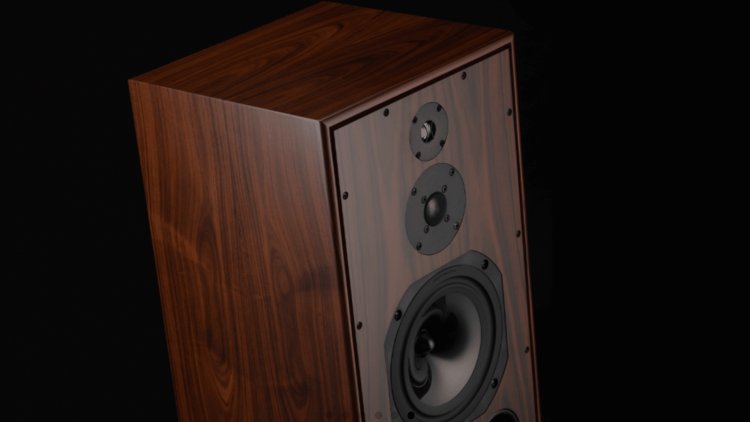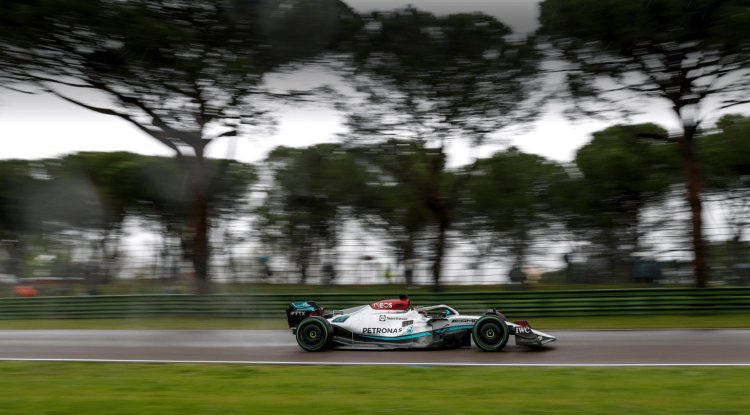The Harbeth Super HL5 Plus XD

Perfection typically necessitates time. The best malt whiskeys often spend years in the barrel. When the Harbeth Super HL5 Plus XD's forefathers first appeared in studios 45 years ago, they had to be fairly good.
They were, in fact, the very first Harbeth product. Dudley Harwood, the company's founder, has enough experience to start five businesses. In the 1960s and 1970s, he was the head of the BBC's illustrious Loudspeaker Research Group.
As a result, he was not only responsible for all of English radio's monitor classics, but he also did basic research that is unrivaled in its thoroughness and scientific approach to this day.
The Super HL5 Plus XD is large and attractive in a traditional, non-technical style. When standing in a living room, it is an eye-catcher. The half-height stands required for this were difficult to find a few years ago, but they are now plentiful – along with burly speakers from all sorts of manufacturers who have discovered the retro trend for themselves: JBL has brought back its seventies speakers and even recreated the old waffle foam covers – in orange! Wharfedale is shattering sales records with a redesigned Linton — a massive minibar-sized tub with walnut veneer that, with a bass kick, sweeps the aluminum asparagus of the 1990s and 2000s out of their place.
Even the aroma is distinctive: deep, woody, and waxy. In any way, unpacking a Harbeth is more sensuous than everywhere else: the nose is happy initially, but the sense of touch follows immediately after. Because the Harbeth boxes' veneers are likewise unique. Particularly silky, smooth, and even, attractive furniture quality, but also, unfortunately, sensitive. They're all stunning. Cherry, walnut, and rosewood. These are all standard surfaces in the hi-fi world.
The Harbeth boxes are not completely glued. The sides, top, and bottom form a frame, into which the sound and rear walls are fitted and secured with twelve stout Phillips screws. Not merely in any way: the tightening torque, predictably, influences the vibration qualities of the housing and is thus accurately determined. Unlike the very original BBC models, Harbeth no longer installs the chassis against the baffle from behind, instead opting for the modern practice of fitting drivers flush from the front.

The HL was a pure two-way box until the end of the 1990s, with a 20 mm polypropylene mid-bass driver and a 25 mm fabric dome for the highs. So far, so traditional. Then came the transition from the HL MkIV to the HL5, ushering in the most profound alteration that the speaker type has seen yet. Because the fifth generation received a fully new woofer, which the business built entirely in-house for the first time following years of development with British government grants.
Here, a new material called RADIAL is employed, which is made up of a high-tech polymer that is "filled" with microscopic hollow glass beads by the chemical giant ICI. RADIAL, unlike polypropylene, cannot be pulled into shape from a film with a vacuum. Low-frequency cones, on the other hand, are costly and inconvenient in the injection molding process. As a result, a highly low-loss, acoustically exceptional inert membrane is produced.
For nearly 30 years, RADIAL has been in Harbeth boxes. That doesn't stop many hi-fi enthusiasts from inadvertently bringing up Polyprop and its (supposed or actual) flaws whenever the firm is mentioned. The RADIAL drivers were clearly superior. Especially towards the top end of the transmission range, during the transition to the tweeter - and, of course, especially in larger driver forms, to which the Super HL5 obviously belongs. This slow fading of the sound in the last octave (which is in the presence range of the 17s and 20s) may have nostalgic appeal even now. However, everyone who has heard the fire and flare of the color of a modern Super HL5 wants to leave the vintage alone.
The latest significant update to the box occurred in the late 1990s. The first commercial HiRes sound carriers, SACD and DVD-Audio, were introduced. Both boasted a frequency bandwidth well into the ultrasonic realm, among other things. Harbeth, whose huge dome had recently been upgraded to 20 kilohertz, reacted with the Super HL5 - an HL5 with a double tweeter assembly: A 25-millimeter metal dome offers a flawless connection to the midrange. It is replaced at the very top, on the very last octave, with a somewhat smaller titanium dome. Harbeth is confident that the tandem will stay well over the hearing limit while adhering to the company's strict standards.
The manufacturer specifies a lower limit of 40 Hertz at a rigorous -3dB. However, even with minor involvement of the rear wall in the listening area, full pressure was obviously below: Even by the literal definition of the phrase, the Super HL5 Plus XD is a full-range loudspeaker. As a result, it likes to be put up with a little space between it and the rear wall in rooms that are not too tiny. Because of the position of the bass reflex tube on the front, all of the bass sources in the box are automatically roughly 35 centimeters distant from the wall: the box is 30 cm deep and 33 cm broad. This also serves as an excellent storage location for record covers.
It is difficult to attribute tonal qualities to this box: beauty, grace, and delicacy are clear, but they are ultimately features of the music played with them rather than the speaker itself. "Absolutely neutral, incredibly natural, and delicate" sums up the Super HL5's personality nicely. But also completely honest and wildly unrestrained. The Super HL5 is loud enough to fill large rooms with full dynamics, however, rock at concert volume is not achievable due to a 20 mm woofer per side being insufficient.
Today's price appears to be rather self-assured, as is so often the case with loudspeaker models with a lengthy line of forebears. However, keep in mind that an HL5 from 20 years ago shares only the basic principle and the original two-cubic-foot case format with the present box. And yet the prices of handcrafted hi-fi equipment have skyrocketed elsewhere: a Linn LP12, for example, starts at over 4000 dollars now, as does a Klipsch Heresy. This tendency does not appear to be changing anytime soon.





























